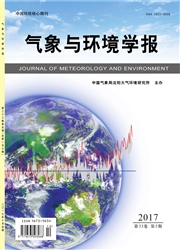

 中文摘要:
中文摘要:
在不同领域和不同研究目的中,大气臭氧会以数密度、体积混合比、质量浓度和柱量等不同物理量表示。由于这些不同量纲的臭氧量的同时存在,对大气臭氧的应用和相互比较造成混乱和不便。基于气体状态方程,推导了大气臭氧不同量纲之间的转换关系,并提出了臭氧数密度廓线与臭氧柱量廓线的相互转换模型。实际应用表明:IUP(Institute of Environmental Physics)气象库提供的数密度和体积混合比转换差异在10%以内,转换精度受温度和气压影响。以激光雷达臭氧数据验证SBUS(Solar Backscatter Ultraviolet Sounder)臭氧数据时发现,最大偏差达20%,且第8、9层和11层具有较高的一致性。利用UGAMP(UK Universities Global Atmospheric Modelling Programme)库中臭氧数据与SCIA-O3(SCIAMACHY O3)产品比较发现,15—45 km之间平均偏差在10%以内。
 英文摘要:
英文摘要:
Number density,volume mixing ratio,mass concentration and ozone column and so on are used to indicate atmospheric ozone concentration in the different fields and the study objectives,which results in inconvenience and confusion for use and comparison of atmospheric ozone.Conversion relationships among different ozone dimensions were derived based on gas equation of state.Furthermore,a conversion model between ozone number density profile and ozone column was proposed.The application results indicate that the conversion difference between the measured number density from institute of environmental physics(IUP) and volume mixing ratio is within 10%,and its accuracy is influenced by air temperature and air pressure.The ozone column data from solar backscatter ultraviolet sounder(SBUS) are validated by converted ozone column from Lidar ozone number density data,and the most bias reaches about 20%.There is better consistency at 8th,9th and 11th layers.Ozone column data from UK universities global atmospheric modeling programme(UGAMP) is compared with ozone number density from SCIAMACHY O3(SCIA-O3) products.It shows that the mean bias is within 10% from 15 km to 45 km.
 同期刊论文项目
同期刊论文项目
 同项目期刊论文
同项目期刊论文
 期刊信息
期刊信息
